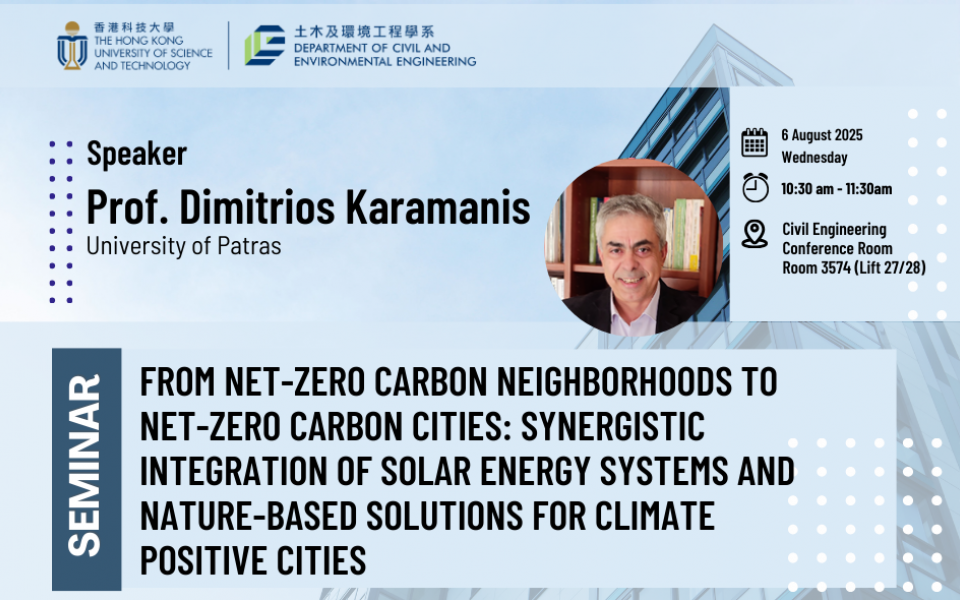Civil Engineering Departmental Seminar - From net-zero carbon neighborhoods to net-zero carbon cities: synergistic integration of solar energy systems and nature-based solutions for climate positive cities
Supporting the below United Nations Sustainable Development Goals:支持以下聯合國可持續發展目標:支持以下联合国可持续发展目标:
From net-zero carbon neighborhoods to net-zero carbon cities: synergistic integration of solar energy systems and nature-based solutions for climate positive cities
Addressing climate change is a major challenge due to shifted weather patterns and extreme events that threaten well-being. Moreover, half of the global population lives in cities and is responsible for almost 70% of global carbon emissions. Therefore, the elimination of these emissions and mitigation of their environmental impact through innovative urban transformation solutions at neighborhood and city scales is critical. In this context, solar energy technologies and building-tailored integration of photovoltaics (BIPV) offer a promising pathway toward achieving climate-neutral urban environments. In this work, we investigated the net-zero urban energy transition with the elimination of both operational stationary and transportation carbon emissions of private cars by combining PV building integration design with Nature-based solutions (NBS) such as tree planting and green roofs at the neighborhood and city scales. A residential building block of six-story buildings in the city area of Ioannina, Greece, was selected to apply the BIPV-greenery energy and carbon balances. The results show that neighborhood buildings can be transformed to zero-emission before 2030 with only rooftop PV, green infrastructure, and grid decarbonization at the same rate as the previous years. Including PV façade integration combined with greenery on roofs or walls, both EV charging and offsetting the emissions of remaining conventional private cars are achieved. Upscaling to the city, decarbonization of all operational emissions can be feasible until 2030 with available roofs covered by photovoltaics, current urban forests, and dense planting of trees for nearly 70% of carbon emissions and the remaining 30% covered by a combination of reducing mobility emissions, adding green roofs at flat rooftop PV installations, green walls or façade PV installations. Since all the combined components are currently available, focus should be placed on improving their adaptation through co-creation and regulation support.
Professor of Alternative Energy Sources at the University of Patras leading the group of Renewable Energy Sources and Cool Environment (ResCue). He studied Physics at the University of Ioannina 1986-1990 where he submitted his doctoral thesis 1990-1997. Prof. Karamanis has thirty-five years of research experience in the fields of alternative energy sources with special emphasis on wind and solar energy utilization technologies in the last fifteen years. Participating in competitive National and International research programs as scientific coordinator and researcher, he has published over 120 scientific papers in scientific journals, patents, chapters and books with more than 4000 citations and h-index 40 (Scopus). He serves as Associate Editor of Green Technologies and Sustainability Elsevier/KeAi and in the Editorial Boards of Clean Energy & Sustainability; Carbon Footprints; Energy Buildings; Urban Transitions. Prof. Karamanis has been invited expert for European Climate, Infrastructure and Environment Executive Agency and National Research Councils such as Lithuania and Romania. Prof. Karamanis teaches courses on renewable energy sources, energy efficiency and RES applications in Departments of the Universities of Ioannina and Patras since 2006.
